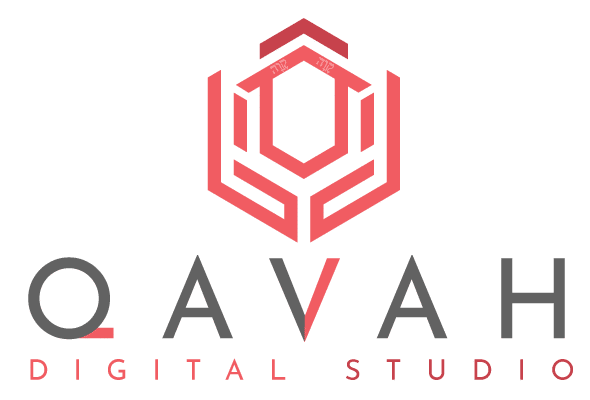In today’s world, where social media plays a crucial role in brand communication and marketing, the terms Social Media Management and Social Media Marketing are often confused. Although they are closely related, they have distinct and specific functions. While both focus on social platforms as their primary medium, social media management and social media marketing have unique approaches to achieve different objectives. In this article, we will explore what each term means, their differences, and how they can complement each other to improve a brand’s digital strategy.
What is Social Media Management?
Social Media Management refers to the day-to-day administration of a brand’s social media accounts. It involves creating and publishing content, interacting with the community, responding to questions and comments, and monitoring the performance of posts. The main goal of this function is to maintain an active and relevant presence on social platforms, fostering a close and continuous relationship with followers.
For example, a social media manager ensures that posts are scheduled, interactions with users are timely and respectful, and followers receive responses to their inquiries. Often, social media management also includes planning visual and written content, as well as overseeing analytics tools to measure the impact of daily actions.
What is Social Media Marketing?
On the other hand, Social Media Marketing focuses on promoting products, services, or the brand itself through strategic campaigns. It involves using paid ads, influencer collaborations, and creating content geared towards conversions or sales. The goal here is clear: to increase reach, drive traffic, and ultimately turn that traffic into sales or other business objectives.
An example of social media marketing is a paid ad campaign on Facebook or Instagram designed to reach a specific audience and promote a limited-time offer or a new product. This approach tends to be more strategic and business-focused in the short term, such as generating leads or increasing e-commerce sales.
Key Differences Between Social Media Management and Social Media Marketing
Although both terms seem similar, the main difference lies in their purpose and focus. While social media management is aimed at maintaining the brand’s presence and building relationships with followers, social media marketing has a more direct focus on promotion and sales.
In simple terms:
- Social Media Management is about ongoing communication, building relationships, and managing the brand’s presence.
- Social Media Marketing is more about specific strategic actions designed to achieve measurable results, such as increased sales, more website visits, or generating leads.
A key aspect is that social media marketing usually requires a financial investment in paid ads, while social media management can operate without a big budget, though it requires time and human resources to be effective.
Examples of Social Media Management and Social Media Marketing in Action
Example of Social Media Management
Imagine a small clothing store on Instagram that consistently posts photos of new products, quickly responds to followers’ comments, and manages direct message inquiries. This strengthens the relationship with current customers and attracts potential buyers by keeping the page active and appealing.
Example of Social Media Marketing
Now, imagine that the same store launches a paid ad campaign to promote a special 20% discount on its new summer collection. The goal is to attract not only its current followers but also a broader audience that may not yet know about the store.
Both strategies can coexist and complement each other, but it’s important to understand what to expect from each.
When is Social Media Management Best Used?
Social Media Management is ideal when the primary goal is to build a loyal and engaged community and strengthen the brand’s presence in the long term. Companies looking to develop their brand image or increase customer loyalty should focus on social media management to ensure that interaction with customers is continuous and positive. Additionally, it’s an excellent tool for customer service, allowing for the quick and public resolution of issues or questions, which reinforces trust in the brand.
When is Social Media Marketing More Effective?
Social Media Marketing is more suitable when the focus is on fast and measurable results. If a company is launching a new product or service and needs to generate attention and sales quickly, a paid social media marketing campaign can be much more effective than just maintaining an organic presence. Using targeted ads allows reaching specific audiences based on their interests, behaviors, and demographics, maximizing the return on investment.
Can Both Approaches Be Used at the Same Time?
The short answer is yes, and in fact, it’s recommended. Utilizing social media management to build relationships and maintain a constant presence while implementing paid marketing strategies can have a much greater impact. The key is to integrate both approaches properly. For example, a company can use social media management to nurture its community and, during key moments like product launches, leverage social media marketing to maximize reach and conversions.
A balanced approach allows the brand to remain visible and relevant on a daily basis, while marketing campaigns provide the extra push needed to achieve specific business goals.
The Essential Tools for Social Media Management
Social media management tools are crucial for staying organized and efficient when managing multiple platforms and accounts. Here, we’ll highlight some of the most popular and useful tools:
- Hootsuite: Ideal for scheduling posts on various platforms from one place, along with offering detailed analytics and real-time mention monitoring.
- Buffer: Another scheduling tool that also allows for performance analysis of posts and collaboration with content teams.
- Sprout Social: A more advanced solution offering features like social CRM, detailed analytics, and customizable reports.
These tools help optimize time, facilitate team collaboration, and ensure that posts are consistent and well-planned, which is crucial for effective social media management.

Key Metrics in Social Media Management and Marketing
Measuring the performance of strategies is critical in both social media management and marketing. This section will explain the essential metrics that help assess whether a strategy is working or needs adjustments:
- Engagement: The interaction users have with content, such as comments, likes, and shares. In management, it indicates the level of connection with the audience.
- Reach: How many people have seen the posts. This is important for measuring the effectiveness of both organic content and paid campaigns.
- Conversions: In marketing, a key metric is how many users complete a desired action (purchase, subscription, etc.) after seeing an ad.
- ROI (Return on Investment): In paid marketing, ROI measures the benefit gained relative to the cost of the campaign, which is essential for optimizing future ad spending.
This section educates the reader on how to interpret these metrics to adjust both daily management and marketing campaigns, ensuring that both approaches contribute to overall success.

How to Integrate an Organic Content Strategy with Paid Campaigns
One common challenge on social media is effectively integrating organic posts with paid campaigns. Here, the content will explain how to make both strategies work together to maximize impact:
- Organic content: Builds a loyal follower base, generates natural engagement, and showcases brand authenticity. Managing this daily content is essential for maintaining a consistent presence.
- Paid campaigns: These focus on specific objectives, such as sales or promotions, and extend reach to a broader audience. Paid campaigns can leverage successful organic content to amplify its impact.
This section will explain how to create synergy between both approaches, for example, using organic content to test what types of posts generate the most engagement and then boosting them with paid ads, thus achieving better results at a lower cost.
The Role of Community Managers in Social Media Management
The community manager plays a crucial role in social media management, as they are responsible for interacting directly with the audience, managing comments, direct messages, and mentions in real-time. This section will focus on:
- Community manager responsibilities: Comment moderation, answering questions or complaints, participating in relevant conversations, and managing the brand’s reputation.
- Importance of empathy and responsiveness: A community manager’s ability to respond quickly and empathetically is key to fostering an active and loyal community.
- Supervising the brand’s tone: Ensuring that all interactions align with the company’s image and values is crucial to maintaining coherent and effective communication.
Here, we’ll explore how community managers are the bridges between the company and its social media community, and how well-managed relationships can enhance the brand’s image and increase customer loyalty.
Future Trends in Social Media Management and Marketing
Social media is a constantly evolving environment, and brands must adapt to new trends to stay competitive. This section will address the trends that are beginning to have a major impact on both social media management and marketing:
- Automation: AI tools and chatbots are making it easier to handle tasks like answering FAQs or scheduling posts intelligently.
- AI and predictive analytics: AI allows social media managers to predict trends and future behaviors based on big data analysis.
- Social commerce: Platforms like Instagram and Facebook have integrated direct shopping features, facilitating social commerce where users can purchase products without leaving the app.
- Growth of short-form video platforms: With the rise of TikTok and Instagram Reels, short, dynamic content is becoming a fundamental pillar in both management and advertising strategies.
- Immersive experiences: Augmented reality and virtual reality are starting to be part of strategies, allowing interactive experiences for users.
This heading helps prepare readers for the future, showing them how to leverage these emerging trends to enhance both their management efforts and their social media marketing campaigns.
Conclusion: Maximizing the Power of Both Approaches
In summary, social media management and social media marketing are two distinct but complementary strategies that can help brands thrive on social platforms. While management focuses on maintaining a continuous relationship with the audience through day-to-day interactions, marketing drives conversions and business goals through targeted, strategic campaigns.
By understanding when to prioritize social media management and when to invest in social media marketing, businesses can create a well-rounded and effective social media presence. A balanced approach, where both strategies are used together, enables brands to build loyalty, grow their audience, and meet tangible business goals.
Whether it’s cultivating a community of engaged followers or driving sales through well-timed campaigns, leveraging the strengths of both management and marketing will give your brand the competitive edge it needs to succeed in today’s digital world.








